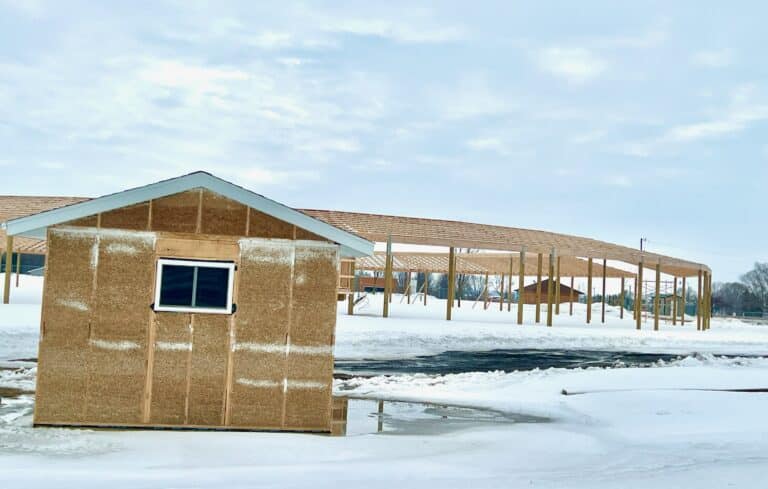*This article was written as part the EDC’s Spring 2023 newsletter. Pictured above is the demonstration building constructed with hempcrete grown and made by the tribal members*
Sitting down with Earl Pendleton, Vice President of the Tribal Council, the expectation was to learn about the Lower Sioux Indian Community’s plan for producing industrial hemp for use as building insulation . . . the true depths of the story reach much deeper than just a plan for a product. Here, in west central Minnesota near the small town of Morton, Minnesota, one community fosters sustainability while creating health and happiness for its tribal members.
“The plant has over 25,000 uses from plastics to edible grain to fiber to building materials – like hempcrete – which is what we are interested in producing here,” Pendleton said, starting off a conversation that would weave health, happiness, and easy mitigation of climate change into a single thread – hemp.
The tribe as a whole entity has never farmed the land together – until now. Over the past few years, Joey Goodthunder, with occasional help from friends also in the industry, has been farming hemp on 400 acres of tribal land. The process of harvesting industrial hemp is not as quick as a commodity like soybean and corn. The grain is combined, and the stalk is separated and left in the field. Morning dew or rain creates rot, and after rotating the crop over a period of weeks it is finally ready to be bailed. The rotting process allows for decortication or the separation of the fibers from the stalk. The stalk is then ground up into what is known as hurd, the product that is used to create hempcrete or building insulation. The process here is not about profitability it’s about sustainability.
“The recipe is easy, it’s (hemp) hurd, water and lime. This creates a building that doesn’t mold and holds perfect humidity, it truly is a technology that doesn’t exist, it’s all-natural. It creates a living, breathing home,” Pendleton explains enthusiastically about the benefits. He continued to explain that with people spending more time indoors during and after the pandemic ‘sick-building syndrome (SBS)’ was seen more. SBS is used to describe a range of symptoms thought to be linked to the extended amount of time in a certain building without any specific reason to be found. Pendleton explains that living in buildings constructed with hempcrete reduces this risk. “Chemicals aren’t used in this process. In modern construction, we wrap ourselves up in a bubble.” But the durability of hempcrete creates an environment where the walls literally can breathe, they can’t mold or get wet, and hempcrete won’t even burn.
“People can feel the difference when living in these buildings” he explains. The Lower Sioux Indian Community has plans to build a hempcrete production facility on the reservation which is well underway. The plan is to produce and process enough hurd to create hempcrete for community building projects, including elder housing. The availability to have a healthy product, made and built by the community for the community becomes healing, it becomes a true home. Hempcrete is not only becoming a rich resource but also a legacy for the Lower Sioux Indian Community.

